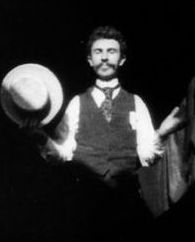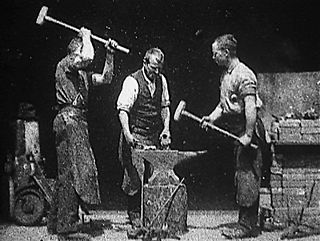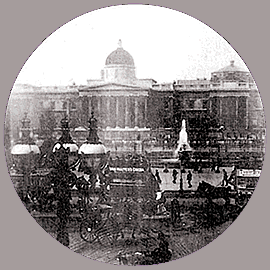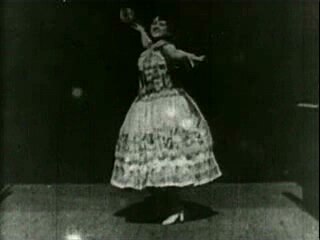| |||
|---|---|---|---|
| +... |
| Years in film |
|---|
 |
| 19th century |
| 1870s |
The following is an overview of the events of 1893 in film, including a list of films released and notable births.
| |||
|---|---|---|---|
| +... |
| Years in film |
|---|
 |
| 19th century |
| 1870s |
The following is an overview of the events of 1893 in film, including a list of films released and notable births.
| Month | Date | Name | Country | Profession | Died | |
| January | 15 | Ivor Novello | UK | Actor, Composer | 1951 | |
| February | 10 | Jimmy Durante | US | Actor, Singer | 1980 | |
| March | 7 | Elsa Ratassepp | Estonia | Actress | 1972 | |
| 29 | Astrid Holm | Denmark | Actress | 1961 | ||
| April | 3 | Leslie Howard | UK | Actor | 1943 | |
| 12 | Robert Harron | US | Actor | 1920 | ||
| 20 | Harold Lloyd | US | Actor | 1971 | ||
| May | 8 | Lester Dorr | US | Actor | 1980 | |
| 14 | Jack Rice | US | Actor | 1968 | ||
| 15 | José Nepomuceno | Philippines | Director | 1959 | ||
| June | 10 | Hattie McDaniel | US | Actress, Singer-Songwriter, Comedian | 1952 | |
| 14 | Suzanne Grandais | France | Actress | 1920 | ||
| July | 6 | Lech Owron | Poland | Actor | 1965 | |
| August | 3 | Vicente Salumbides | Philippines | Actor, Director | 1979 | |
| 14 | Carl Benton Reid | US | Actor | 1973 | ||
| 17 | Mae West | US | Actress | 1980 | ||
| 30 | Vera Kholodnaya | Russia | Actress | 1919 | ||
| September | 6 | Irving Bacon | US | Actor | 1965 | |
| 16 | Alexander Korda | Hungary | Director, founder of London Films | 1956 | ||
| October | 14 | Lillian Gish | US | Actress | 1993 | |
| November | 19 | Chris-Pin Martin | US | Actor | 1953 | |
| December | 7 | Fay Bainter | US | Actress | 1968 | |
| 12 | Edward G. Robinson | Romania | Actor | 1973 | ||
| 24 | Harry Warren | US | Film Songwriter | 1981 | ||
| 29 | Berthold Bartosch | Bohemia | Filmmaker | 1968 |
![]() Media related to 1893 in film at Wikimedia Commons
Media related to 1893 in film at Wikimedia Commons

William Kennedy Laurie Dickson was a British-American inventor who devised an early motion picture camera under the employment of Thomas Edison.

Blacksmith Scene is an 1893 American short black-and-white silent film directed by William K.L. Dickson, the Scottish-French inventor who, while under the employ of Thomas Edison, developed one of the first fully functional motion picture cameras. It is historically significant as the first Kinetoscope film shown in public exhibition on May 9, 1893, and is the earliest known example of actors performing a role in a film. It was also the first U.S. motion picture film ever copyrighted that same year. 102 years later, in 1995, Blacksmithing Scene was selected for preservation in the United States National Film Registry by the Library of Congress as being "culturally, historically, or aesthetically significant". It is the second-oldest film included in the Registry, after Newark Athlete (1891).
The year 1903 in film involved many significant events in cinema.
The year 1902 in film involved some significant events.
The following is an overview of the events of 1895 in film, including a list of films released and notable births.
The following is an overview of the events of 1896 in film, including a list of films released and notable births.
The following is an overview of the events of 1894 in film, including a list of films released and notable births.
The following is an overview of the events of 1899 in film, including a list of films released and notable births.
The following is an overview of the events of 1892 in film, including a list of films released and notable births.

The Kinetoscope is an early motion picture exhibition device, designed for films to be viewed by one person at a time through a peephole viewer window. The Kinetoscope was not a movie projector, but it introduced the basic approach that would become the standard for all cinematic projection before the advent of video: it created the illusion of movement by conveying a strip of perforated film bearing sequential images over a light source with a high-speed shutter. First described in conceptual terms by U.S. inventor Thomas Edison in 1888, it was largely developed by his employee William Kennedy Laurie Dickson between 1889 and 1892. Dickson and his team at the Edison lab in New Jersey also devised the Kinetograph, an innovative motion picture camera with rapid intermittent, or stop-and-go, film movement, to photograph movies for in-house experiments and, eventually, commercial Kinetoscope presentations.
The following is an overview of the events of 1891 in film, including a list of films released and notable births.

Dickson Greeting is an 1891 American short silent film. Directed, produced by, and starring motion-picture pioneer William K. L. Dickson, it displays a 3-second clip of him passing a hat in front of himself, and reaching for it with his other hand. It was filmed on May 20, 1891 in the Photographic Building at Edison's Black Maria studio, West Orange, New Jersey, in collaboration with Thomas Edison using his kinetograph. The film was played for viewers at the National Federation of Women's Clubs, one of the first public presentations of a motion picture.

The Black Maria was Thomas Edison's film production studio in West Orange, New Jersey. It was the world's first film studio.

The following is an overview of the events of 1890 in film, including a list of films released and notable births and deaths.

Edison Studios was an American film production organization, owned by companies controlled by inventor and entrepreneur, Thomas Edison. The studio made close to 1,200 films, as part of the Edison Manufacturing Company (1894–1911) and then Thomas A. Edison, Inc. (1911–1918), until the studio's closing in 1918. Of that number, 54 were feature length, and the remainder were shorts. All of the company's films have fallen into the public domain because they were released before 1928.
The following is an overview of the events of 1889 in film, including a list of films released and notable births.

Carmencita is an 1894 American short black-and-white silent documentary film directed and produced by William K.L. Dickson, the Scottish inventor credited with the invention of the motion picture camera under the employ of Thomas Edison. The film is titled after the dancer who features in it.
The decade of the 1890s in film involved some significant events.
Antonia Isabella Eugénie Dickson was a writer, lecturer, music composer, and concert pianist. With her brother, William Kennedy Dickson, she authored the History of the Kinetograph, Kinetoscope, and Kinetophonograph, considered the first book on the history of film, and a biography of Thomas Edison.